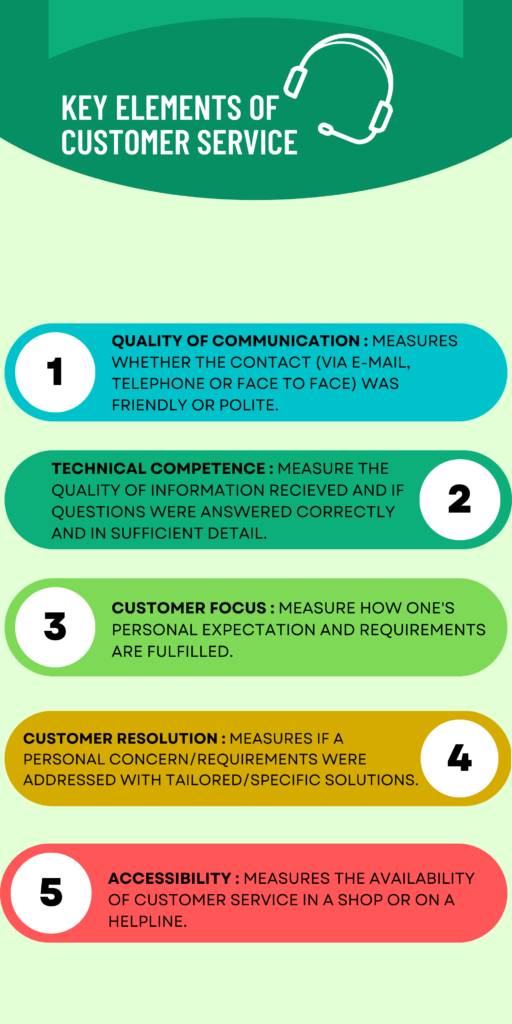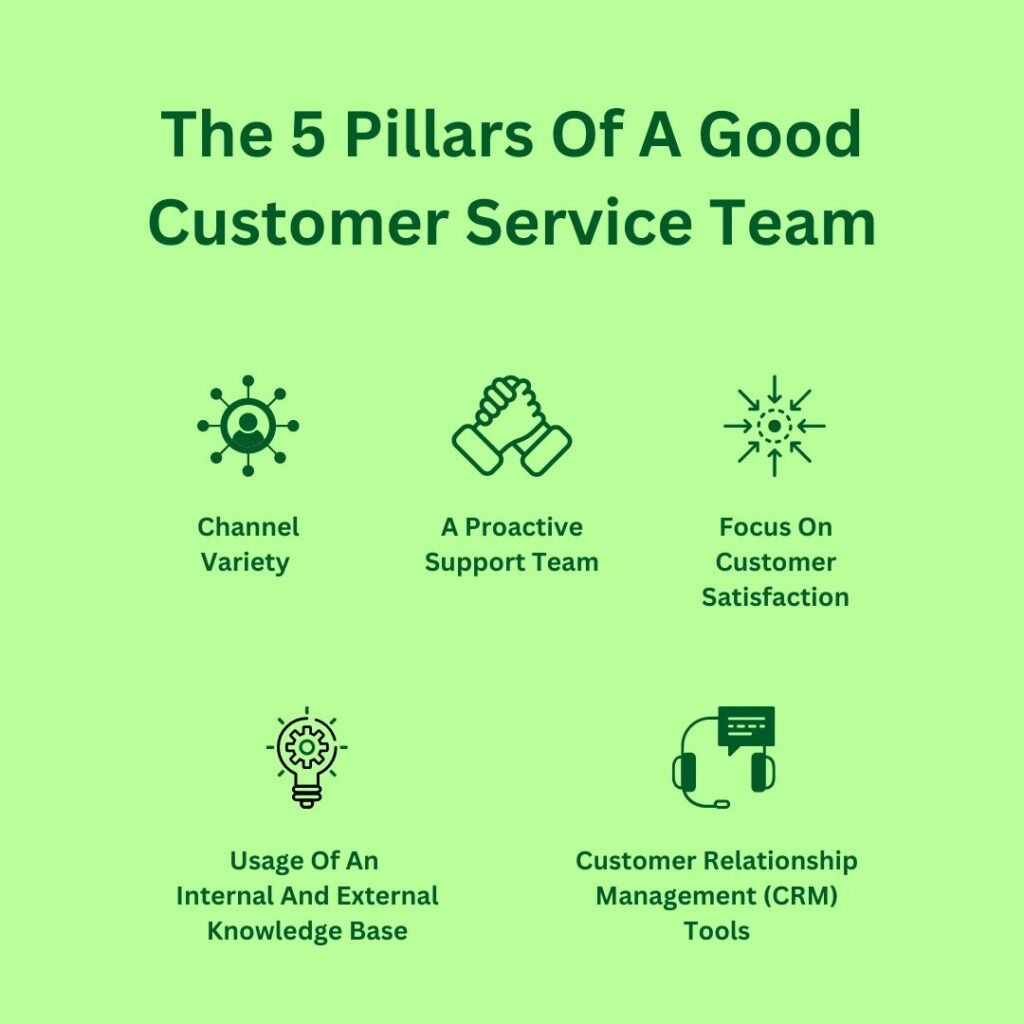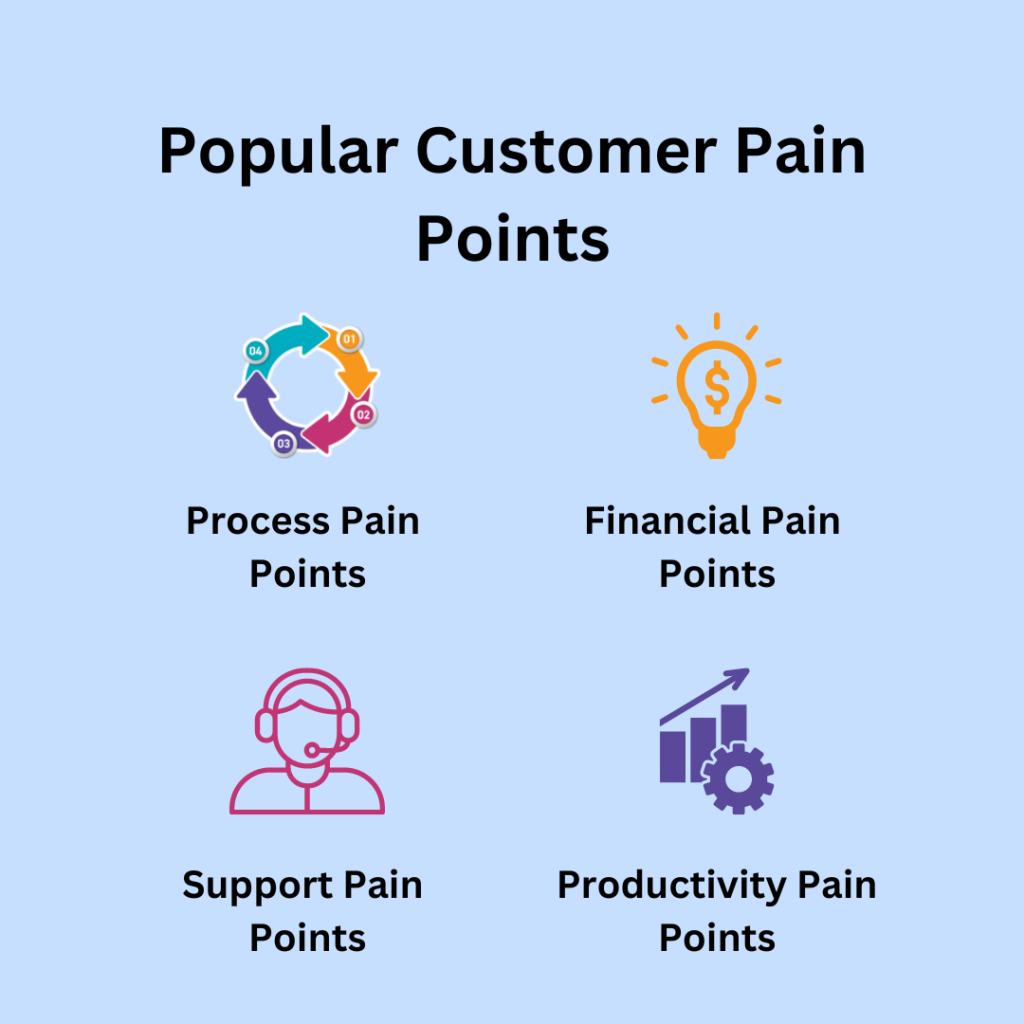
In the backdrop of fast changing dynamics of modern environment, Customer remains the backbone of business. Customer largely decides life span of any business. Customer has always been and shall always remain the King. Here, Customer Service is a potent tool to rectify complaints of the customers and make them happy and satisfied all the time.
“It takes months to find a customer…..seconds to lose one”
(Vince Lombard)
Meaning Of Customer Service
Customer Service means anything that a Company does to enhance satisfaction of its customers. Customer Service is the process of offering support and advice to customers before, during, and after the customer buys a product or service, and to ensure customer satisfaction.
There Is A Direct Correlation Between:
- Satisfied Customers
- Brand Loyalty
- Revenue Growth
Improving Customer Service is vital as it is one of the efficient drivers of company profitability.
Customer Service is the assistance and advice provided by a company to those people who buy or use its products or services.
A well-performed customer service increases revenues.
Customer Service maintains focus on the external and internal aspects of the organization that facilitate the business activity.
A service package is a combination of tangible and intangible characteristics a firm uses to take care of its clients.
Customer Service is the way in which service professionals interact with and meet the needs of current and potential customers.
It Involves Aspects Like:
- Answering Client Questions
- Solving Their Problems
- Opening Lines Of Communication
- Making It Easy And Enjoyable To Do Business With Your Company.
Customer Service And Its Other Forms
Essentially, Customer Service encompasses the entire buying journey.
Customer Support generally means providing technical help to a customer after a purchase, like installation help and troubleshooting.
Customer Aftercare, or Customer Care, takes place after a sale.
Notable Benefits Of Customer Service
- Improved customer satisfaction and loyalty.
- Conversion of one-time customers into repeat customers.
- Conversion of disengaged customers into loyal followers.
- Facilitates customers to travel along the customer journey.
- Grants status as a competitive differentiator.
- Portrays a positive brand image and reputation.
Impact Of Customer Service On Business
- Simply prioritizing good customer service in an organization increases revenue.
- Happy customers build a better reputation.
- It attracts customers, investors, partnerships, and employees.
- A word-of-mouth serves as the best publicity for business.
- Customer Retention is closely linked to customer satisfaction.
- Beyond product satisfaction or value, customer satisfaction reigns supreme in today’s landscape.
- Customer churn decreases with more customer care as otherwise Products have issues and Services have flaws.
- CLTV (customer lifetime value) reveals the amount of money a customer potentially brings to a company over the course of his engagement..
- Employee happiness correlates to customer happiness.
- Company culture strengthens with improved customer sentiment.
- When a culture of serving people is created, the employees follow suit. Teammates work together with kindness, compassion, and respect.
- Company culture strengthens with improved customer sentiment.
- Brand awareness soars with positive customer experiences.
- Marketing spend lessens with more customer advocates.
- Save money and time with every loyal customer. Not only do they purchase more, but they also bring in new business.
- Your customers become your sales reps.
- Valued customer service unites goals and processes.
- When everyone at a company has the same end-goal, the entire workflow becomes streamlined.
- Business longevity relies on satisfied customers.
- For scaling start-ups, providing an excellent customer service experience is the suitable way to keep up momentum and minimize loses.
Nuances Of Customer Service

Requisite Customer Service Skills
Essentially, good Customer Service skills concentrate on:
- Giving attention to customers.
- Empathetically solving the customer’s problem.
- Speaking in an enthusiastic and positive manner.
- Ensuring retention of valued customers.
- Take special care to ensure their problems are solved.
Rationale For Customer Contact Service
Customers need to contact Customer Service for various reasons:
- Product or Service Problems:
- Either they are not able to understand how to operate it, or
- Customers feel it does not adequately meet their needs.
- Time-Related Problems:
- In case certain step in the customer journey is not fulfilled.
- Miscommunication:
- Effects of the change in some rules might compel the customer to call and enquire about the change.
Key Components Of Efficient Customer Service
- Timely attention to issues raised by customers is of critical importance.
- Customer service should be a single-step process for the consumer.
- The original representative should follow up with the customer to in another department to ensure that the problem is solved.
Business need to accelerate with great service that provides the experience customers expect or risk losing out to the competition.
How is Customer Service Rendered?
Today, service is a crucial element of any product, service, or business, and needs to be baked in the all platforms and channels of your brand, such as:
- Phone
- Social Media
- Website
- SMS or text
- In-person/on-site support
- Traditional Postal Mail
More than pricing, and even the product itself, Customer Service is the biggest driver of customer loyalty.

Elements Of Customer Service
While embarking upon journey to plan Customer Service Strategy, understanding your customer is imperative. It can be done by asking two fundamental questions:
- Who are your customers?
- What is the treatment they are expecting?
Pillars Of Good Customer Service

1. Channel variety
Here are a few of the most common channels for clients to get in touch with you.
- Social Media
- Live Chat
- Phone Calls
- Self Service
2. A proactive customer service team
A great customer service team looks for ways to meet their customers’ needs before their clients even tell them what those needs are.
- Willing to go the extra mile. An adequate CSR simply solves a user’s problem. An excellent CSR listens to the customer, asks penetrating questions to get to the root of their issue, and does not mind spending a little extra time to make sure the client gets what they need.
- Empathetic
- Patient
- Responsive
- Positive
3. A focus on customer satisfaction
The core goal of customer service is to satisfy the client. High levels of customer satisfaction usually mean repeat business.. Some key strategies to consider include:
- Focus on creating loyal customers.
- Training to avoid poor customer service.
- Extra attention for new customers.
4. Usage of an internal and external knowledge base
External knowledge bases are for customers or potential customers. However, internal knowledge bases exist for the benefit of the team.
Some knowledge bases for customer service team available include:
- Customer FAQ.
- On boarding or training FAQ.
- Customer service tips.
- External pages with information for customers.
5. Customer Relationship Management (CRM)
A good customer relationship management system can be instrumental in improving the customer experience.
It serves as a central repository of all client information and allows departments across the organization to access and add to this information.
A CRM tool can store and organize information like a customer’s demographic information, past purchases, and contact with your business.
Essential Features For CRM:
- Contact management
- Tracking interactions
- Scheduling and reminders
Pain Points In Customer Service
Pain points are issues that are causing prospective customers of your business “pain,” requiring a solution. Uncovering customer pain points have ultimate bearing on both sales and marketing strategy. For Sales Managers knowledge of the prospect’s pain points help to tailor their sales pitch. Marketers understand these pain points so they can advertise/present their solution effectively and in an appealing and enticing way.
- Customer pain points are shortcomings a product or service has that can make the consumer less likely to engage with it.
- Businesses can use different metrics to determine what these pain points are and determine how to fix them.
- Pain points can impact a brand’s image, which can result in less brand loyalty and an overall unfavourable reputation for the company.
- By properly identifying and addressing pain points, it is possible to improve the customer’s experience. It can have widespread positive impact on the success of business
- Greater confidence of consumers induce them to purchasing or engaging with a product or service. They continue supporting the business by contributing to sales and using reviews and word-of-mouth to positively impact the company’s reputation.
Types Of Customer Pain Points

1. Process Pain Points
Process pain points are problems in your internal processes that enable business to interact with customers. These pertain to cases in which it takes too long to get a response, causing potential customers to lose interest and go elsewhere.
Customer pain points related to processes are:
- Tracking and delivery issues.
- Anything that doesn’t work.
- Too many redundant steps in the customer journey.
- Waiting in queues for answers to questions.
- Poor communication between teams.
- Difficulty in connecting to the correct department.
2. Financial Pain Points
Financial pain points are customer problems that involve money.
Money-related customer pain points include:
- Expensive subscription plan or membership fee.
- No transparency of the final cost.
- Overpaying for equipment, software, or tools.
- Less browsing and spontaneous purchases, more buying in bulk
3. Customer Support Pain Points
If customers do not get the help and support they need when looking for a solution they will soon be searching for an alternative elsewhere.
Customers lose trust when they encounter customer service staff who do not understand their products, services, or the importance of contributing to a positive experience.
Support pain points come from a failure to help your customers with their product-related questions throughout their customer journey or the sales process.
Examples of this pain point include:
- Customers get frustrated when information provided by them is not transmitted to the appropriate persons. Ideally customers want to resolve their own problems. Frustration arises only when answers cannot be found in a self-service channel of their choice.
- Not knowing whom to contact in the event of a problem with product or service.
- Lack of product knowledge in support team.
- Lack of information available about product or service.
4. Productivity Pain Points
Customers want to use their time more efficiently and productively.
Understanding productivity pain points can help you offer a solution that balances time and convenience. That means eliminating some of inefficiencies such as:
- Outdated processes and redundant steps in the buying process.
- Complicated checkout processes.
- Forms that do not work with your customers’ systems.
Identification Of Customer Pain Points
- Observe Your Competitors
- Use live chat.
- Check in with your sales, marketing, and support teams.
- Implement Thank You page surveys.
Malady For Customer Pain Points
- Remedy any pain points that are easy to fix.
- Analyse results from research.
- Improve processes and monitor changes.
- Offset negative experiences with positive experiences.
- Ensure a customer follow-up strategy.
Customer Service Strategy
Essential Parameters
- In times of change, customers need support to help quickly answer questions and address any concerns.
- Customer feedback through the service channel is an invaluable source of information about how your company is performing, and ways that you can continue to improve.
- Customer Service personnel need access to all relevant data.
- Intelligent technologies help reduce contact volume and manual work to enable concerned personnel to have more time to focus on customer interactions.
- Customer service improves business resilience by smoothing the effects of change.
If you support your customers when times are difficult, it’s highly likely they will stick with you for the long term.
How Is It A Virtuous Circle?
Customer Service requires the business to go to the people, where and when they want. Serving up the best that you can offer. If you do this, Customers will begin flocking to you wherever you go!
Essential Steps for Developing a Customer Service Strategy
1. Create a Customer Service Vision
It is imperative for the company to communicate the customer service vision to its employees.
Employees must understand the vision and organizational goals for customer service. They must shoulder responsibility to help achieve that vision.
2. Assessment of Customer Needs
The companies must find out what is it that the customer wants and put together plans to satisfy the needs of the customers.
They need to talk to the customers to find out their perception of the services and ascertain their needs and expectations.
A customer needs assessment is done by soliciting feedback through focus groups, satisfaction surveys, or customer comment cards,..
Customer needs and expectations are a moving target.
Expectations and needs change over time. It is essential to strive to stay on top of these moving targets.
3. Recruit Job -Suited Employees
Hiring with the customer in mind is needed in an overall strategy for strong customer service.
Employees must possess the disposition and skill set to help support a strong customer service environment.
Limit interactions with customers only with those employees that can present a positive and helpful interaction.
4. Create Goals for Customer Service
It is necessary to create goals for achieving customer satisfaction.
Employees need to understand what the target is so they can help the organization reach its corporate objectives.
5. Training on Service Skills
The training to employees should explain how the organization would like the employees to behave in every situation .It should help employees understand how to respond to their customers.
Training must cover topics like:
- How to respond to customer complaints.
- How to be responsive to customers.
- How to meet customer needs.
- When to perform service recovery.
- How to answer the phone.
- Your organization’s standards for service.
6. Induct Accountability
Employees need to be held accountable for achieving customer satisfaction goals.
This should be part of a comprehensive performance management system.
Send employees to refresher classes when expectations fall short of your high service standards.
7 Acknowledge Good Service for Rewards
Employees need positive reinforcement and should be rewarded when they demonstrate the desired behaviours of a strong customer service culture.
Organizations need to identify who their customers are, what they want, and develop strategies to achieve those customer requirements.
Requisite Tools For Customer Service Teams
- A help desk system to help customers.
- A knowledge based FAQ on website.
- Shared email foe customer support.
- CRM to manage customer data.
- Live website chat for customer service.
- Methods to manage customer queries.
“It’s our job every day to make every important aspect of the customer experience a little bit better.”
Jeff Bezos, Amazon Founder
According to Kotler, Armstrong, Saunders, and Wong,
“A service is an activity or benefit that one party can offer to another, which is essentially intangible and does not result in the ownership of anything. It production may or may not be tied to a physical product.”
In Retrospect
Provide great customer service today and you will never regret!
Customer Service is about more than meeting customer expectations. Excellent Customer Service skills require an in-depth understanding of all of your clients’ needs and a firm commitment to meeting those needs.
Today’s consumers demand customer interactions that are fast, convenient, and personalized. If you can deliver on these counts, flourishing business is all that is served on your plate.
In a way this is the most effective and efficient way to honour Customer Sovereignty and recognise the maxim that Customer is King!!!
“Building a good customer experience does not happen by accident. It happens by design.
Claze Muscult




